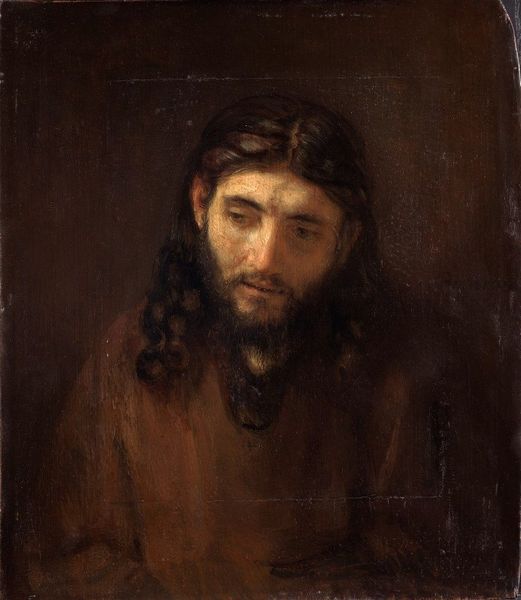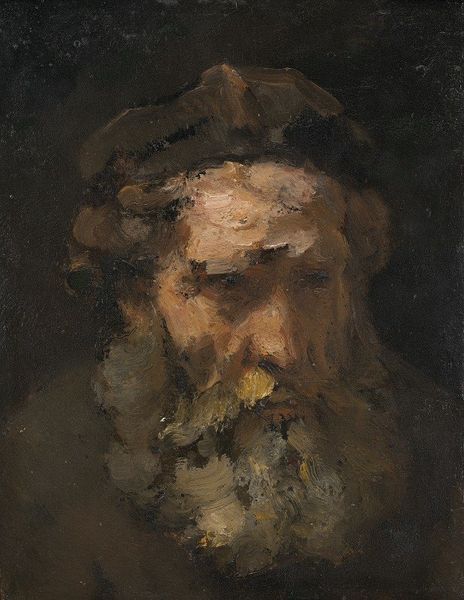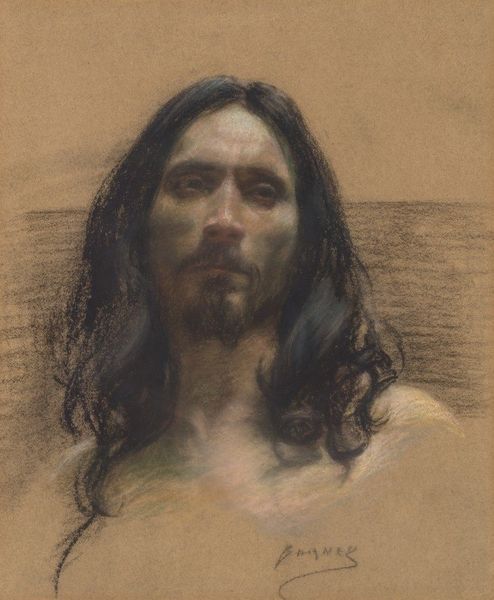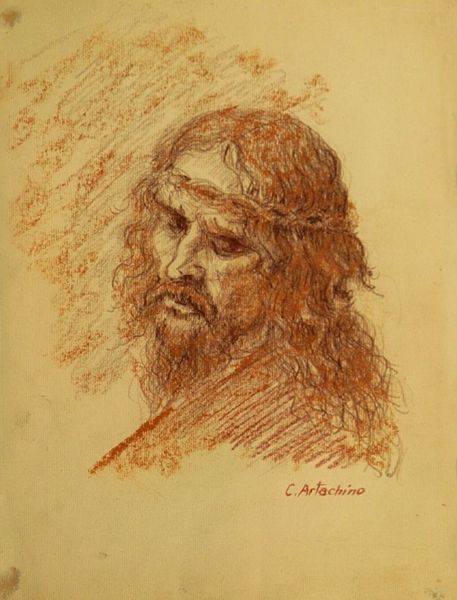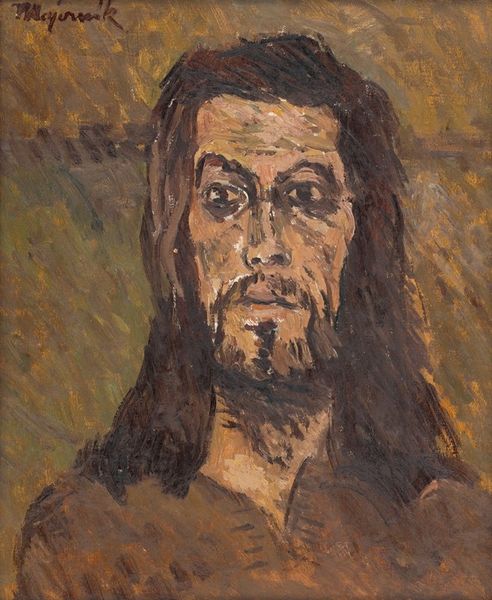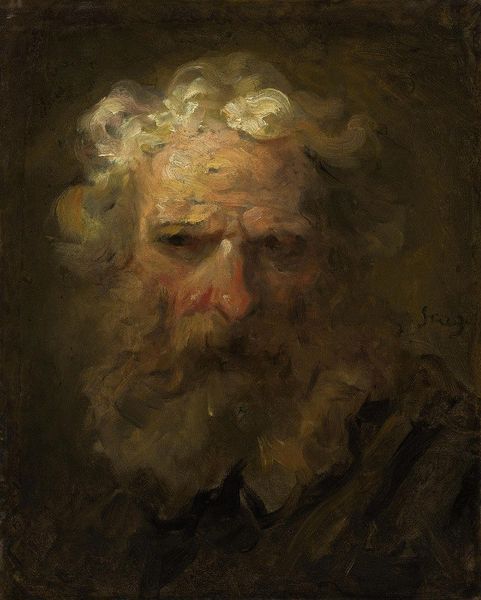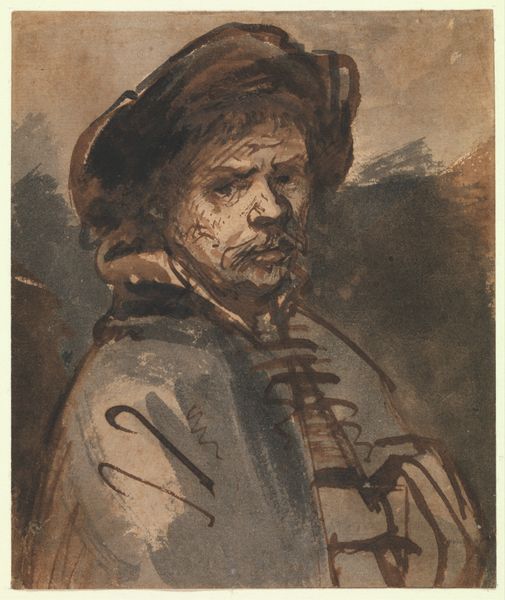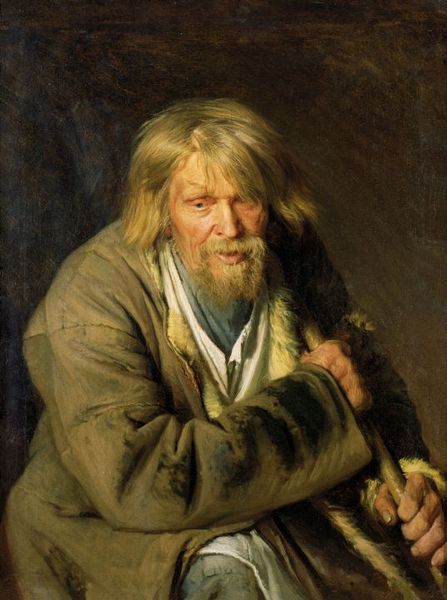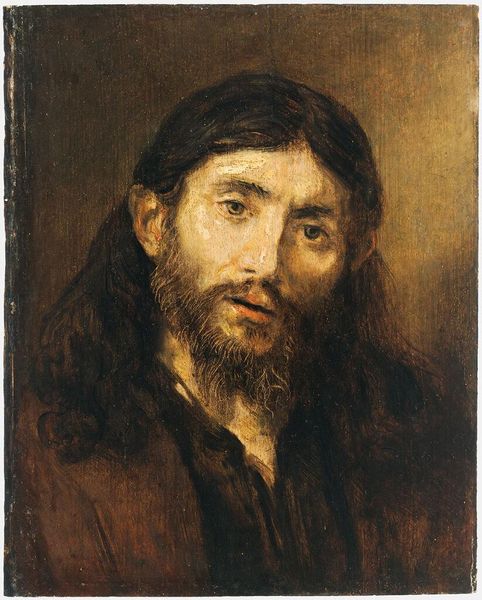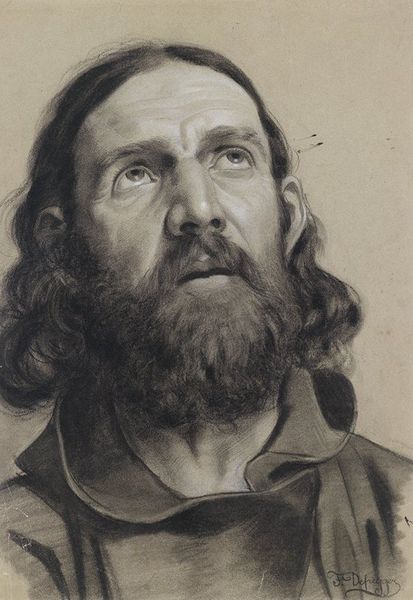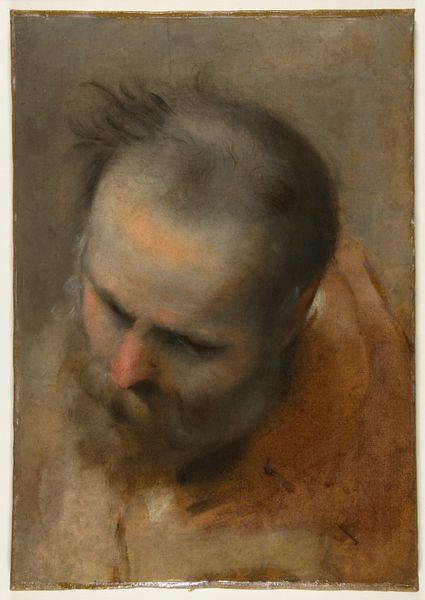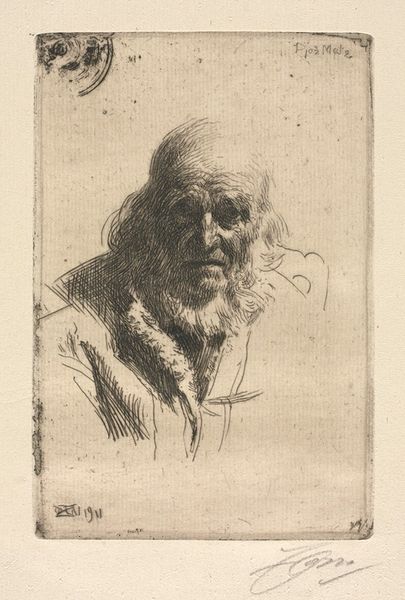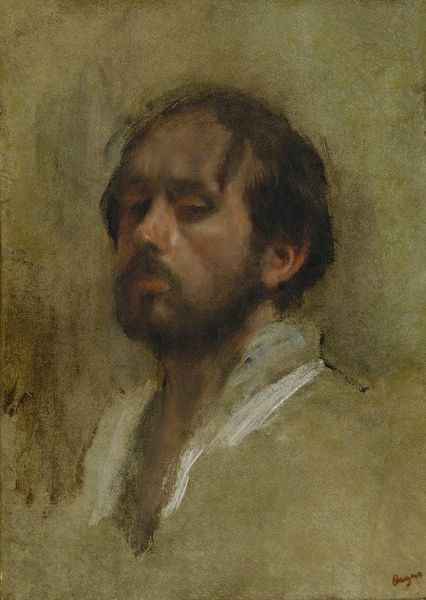
Copyright: Public domain
Eduard von Gebhardt's 'Estonian Peasant' presents a study in contrasts through its composition and muted palette. The subject's profile, framed by flowing hair, is rendered with a rough realism that draws attention to the texture of both the hair and skin. The painting's structure, with its emphasis on line and form, serves as a semiotic system, inviting us to decode the social meanings embedded within the image of the peasant. The loose brushstrokes and unfinished quality challenge conventional representations, opening up a space for questioning fixed notions of identity. Consider how Gebhardt uses the materiality of paint to disrupt traditional portraiture, creating a discourse around representation itself. The unfinished quality destabilizes established meanings, reflecting broader concerns about authenticity and the gaze in art. The work invites ongoing interpretation, recognizing that art is always evolving.
Comments
No comments
Be the first to comment and join the conversation on the ultimate creative platform.
